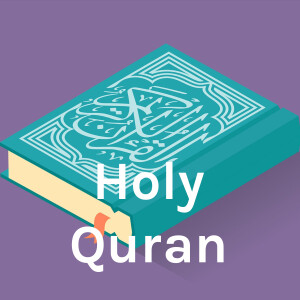
Al-Fajr (Arabic: الفجر, "The Dawn", "Daybreak") is the eighty-ninth chapter of the Quran, with 30 verses .[3] The sura describes destruction of disbelieving peoples: the Ancient Egyptians, the people of Iram of the Pillars, and Mada'in Saleh. It condemns those who love wealth and look with disdain upon the poor and orphans. Righteous people are promised Paradise – the final verse says "And enter you My Paradise!". The Surah is so designated after the word wal-fajr with which it opens.[4]
Summary
- 1-4 Various oaths by natural objects
- 5-13 Unbelievers are warned by the fate of Ád, Thamúd, and Pharaoh[5]
- 14-17 Man praises God in prosperity, but reproaches him in adversity
- 18-22 Oppression of the poor and the orphan denounced
- 23-26 The wicked will vainly regret their evil deeds on the Judgment Day
- 27-30 The believing soul invited to the joys of Paradise[6]
Then the surah discusses that Man praises God in prosperity, but reproaches him in adversity in ayaat 14th to 17th. The discourse then denounces the oppression of the poor in ayaat 18th to 22nd. And approaching the end ayaat 23rd to 25th give the verdict that the wicked will vainly regret their evil deeds on the judgment-day, while ayaat 26th to the 30th gives the good news to the believing soul invited to the joys of Paradise.[7]
Period of revelation
Quran chapters are not arranged in the chronological order of believed revelation (wahy).[8] Muhammad told his followers, the sahaba, the placement in Quranic order of every Wahy revealed along with the original text of Quran.[9] Wm Theodore de Bary, an East Asian studies expert, describes that "The final process of collection and codification of the Quran text was guided by one overarching principle: God's words must not in any way be distorted or sullied by human intervention. For this reason, no serious attempt, apparently, was made to edit the numerous revelations, organize them into thematic units, or present them in chronological order....".[10][11] Surat Al-Fajr is a Meccan sura[12] and meccan suras are chronologically earlier suras that were revealed to Muhammad at Mecca before the hijrah to Medina in 622 CE. They are typically shorter, with relatively short ayat, and mostly come near the end of the Qur'an's 114 surahs. Most of the surahs containing muqatta'at are Meccan. Henceforth apart from traditions,[clarification needed] this surah qualifies to be Meccan typically. According to Yusuf Ali, Al-Fajr may be placed in the dating period close to Surat Al-Lail and Ad-Dhuha.
Theme of the surah
There are almost seven divisions in the Qur'an[clarification needed] according to Themes.[24][25] The last of these seven sections goes from surah Al-Mulk [surah number 67] to surah Al-Nas [surah number 114].[26] This final part [last seventh of the Quran] focuses on sources of reflection, people, final scenes they will face on Judgment Day and hellfire and paradise in general[27] and admonition to the Quraysh about their fate in the present and the hereafter if they deny Muhammad, specifically.[28] This surah Al-Fajr forms a pair with the next one Al-Balad. The central theme of both the surahs is to reprimand the leaders of the Quraysh for the rebellious attitude and arrogant behavior they have adopted with regard to Allah and their fellow human beings after being bestowed with favors and riches.[29]
More Episodes
 2024-02-09
2024-02-09
 2024-01-26
2024-01-26
 2024-01-19
2024-01-19
 2024-01-05
2024-01-05
 2023-12-29
2023-12-29
 2023-11-30
2023-11-30
 2023-11-17
2023-11-17
 2023-11-10
2023-11-10
 2023-10-27
2023-10-27
 2023-10-19
2023-10-19
 2023-10-13
2023-10-13
 2023-09-29
2023-09-29
 2023-09-22
2023-09-22
 2023-09-15
2023-09-15
 2023-09-08
2023-09-08
 2023-08-25
2023-08-25
Create your
podcast in
minutes
- Full-featured podcast site
- Unlimited storage and bandwidth
- Comprehensive podcast stats
- Distribute to Apple Podcasts, Spotify, and more
- Make money with your podcast
It is Free
- Privacy Policy
- Cookie Policy
- Terms of Use
- Consent Preferences
- Copyright © 2015-2024 Podbean.com






